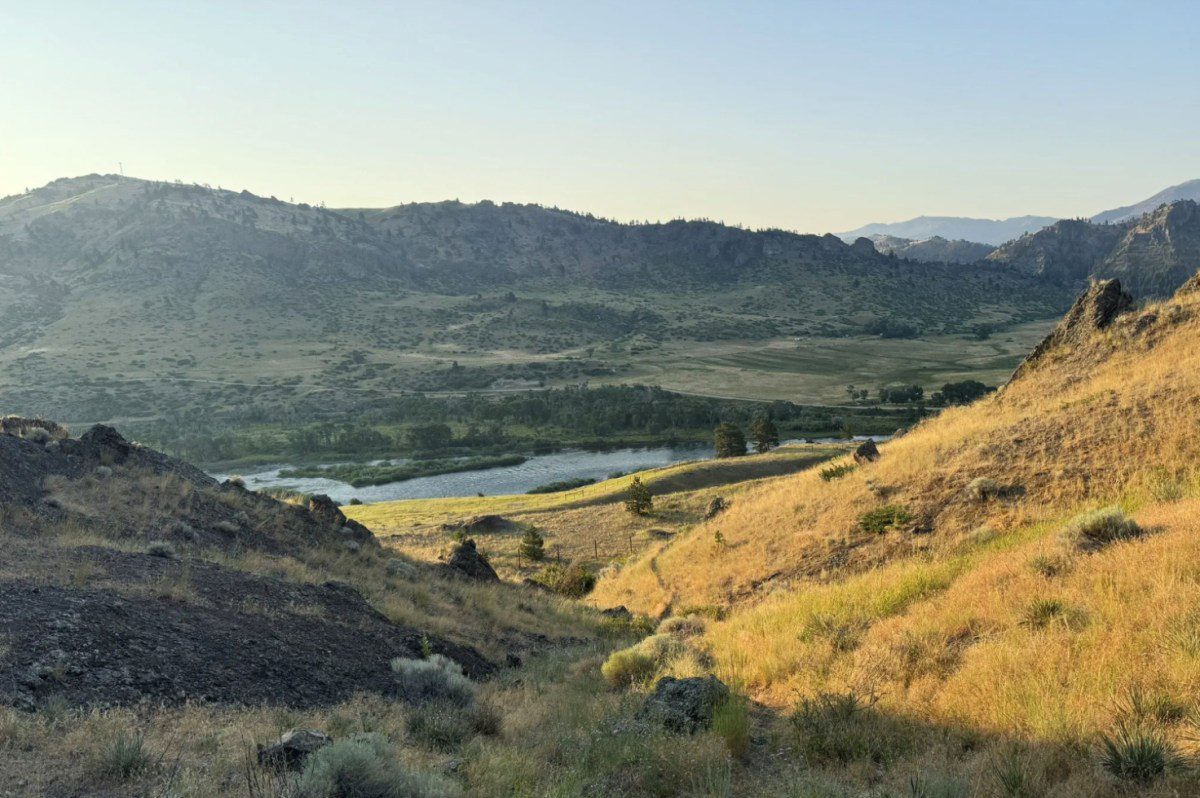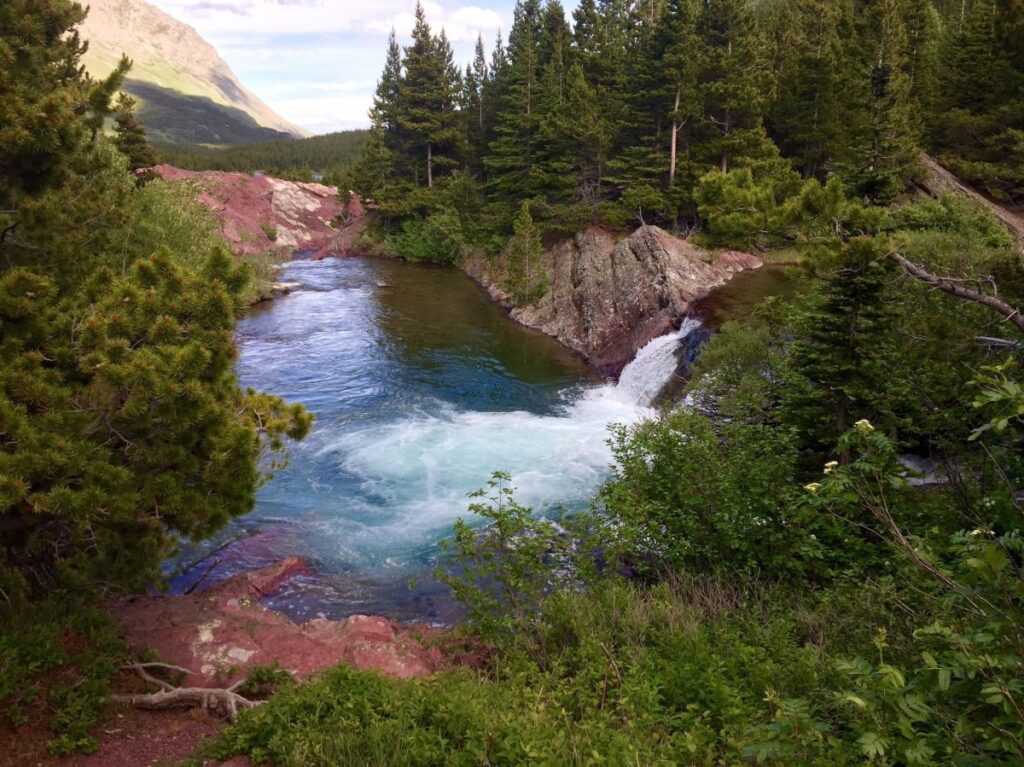When it comes to visiting historical sites in Montana, the options are endless. The Treasure State is home to over 1,200 listings on the National Register of Historic Places, including 28 National Historic Landmarks and over 2,250 miles of scenic and historic byways. Every winding country road offers countless opportunities to pull over and learn something new about a hard-fought battle, a difficult pioneer crossing, or an important moment in state history. As a self-proclaimed history buff, I absolutely love checking out the small, overlooked sites along these routes. Sometimes, they’re little more than a stretch of open prairie with an interpretive sign. Other historic sites are more developed, but all of them played a role in the formation of this corner of the country that I call home.
Recently, I took some time to explore some of the highlights of the Lewis and Clark Trail as it crosses through Montana. While we all likely heard an elementary overview of the Corps of Discovery in school, and how they trailblazed their way from Missouri to Oregon and back, what many don’t realize is that the expedition entered present-day Montana in 1805 and didn’t exit until 1806. Not only does that mean they spent more time here than in any other state west of the Mississippi, it also means there are a LOT of cool sights to see, and some truly humbling, tangible pieces of history crisscrossing the state.
Along our two-week journey, we visited (and revisited) notable places on the official Lewis and Clark Trail in multiple states, as well as Montana. We explored Pompey’s Pillar, took a boat tour of Gates of the Mountains, ogled the wildly underrated confluence at Missouri Headwaters State Park, and marveled at where the Corps portaged the challenging five falls in Great Falls. But surprisingly, one of my favorite spots in Montana was the quick and easy trail we found at Tower Rock State Park.
In a state so full of bucket list natural wonders, Tower Rock near Cascade, Montana doesn’t look like much. From a distance, it’s just a jagged hunk of limestone jutting up from the plains off I-15, similar to many other formations dotting this slice of the state. And in terms of history, it rarely gets a mention. But if you pull over, lace up your boots, and take the short trail to its base and on up to the top, you’ll find it’s one of the coolest and most underrated spots along the Missouri River corridor.
Tower Rock is a rugged, volcanic basalt formation rising over 400 feet above the valley floor in Tower Rock State Park, around 30 miles south of Great Falls, Montana. Lewis and Clark first stumbled upon it in July of 1805, and specifically documented the formation in their journals. At the time, they were navigating the Missouri River when Captain Meriwether Lewis wrote that the formation “appeared to stand alone in the plain” and marked the entrance to what Lewis called the “gates of the Rocky Mountains.” To the Corps, Tower Rock meant progress in the journey west, and it was here that he scouted the route forward — a route that would eventually lead to Idaho and beyond.
Today, over two centuries later, Tower Rock State Park protects not only this larger-than-life geologic feature but also the valley that surrounds it. The trail begins at a small, unassuming parking area just off the highway where there are a few interpretive signs, some pretty pockets of wildflowers, and the unmistakable, spectacular face of Tower Rock. The main trail follows a packed dirt path along the base of the formation, slowly climbing to a viewpoint that opens up over the Missouri River Valley. In the distance, layers of mountains and cliffs rise abruptly from the plains, while lone trees are scattered about near the water. You’ll also find a bench on the trail inscribed with words from Meriwether Lewis himself, calling the formation a “most pleasing view.” And I wholeheartedly agree — this was one of the most photogenic spots we visited! Between the open prairie, the rugged mountains in the distance, the colorful wildflowers, and the imposing face of Tower Rock, there was a surprising amount of beauty to admire.
Following in the steps of Lewis and Clark, we enjoyed a myriad of sights and overlooks on the short stroll. From the high point, the entirety of the West stretched out in all of its panoramic, imposing glory — so much so that it’s hard to imagine crossing Montana’s mountainous expanse on foot being even remotely possible. From here, the ruggedness of Big Sky Country was interestingly juxtaposed with the interstate down below, but with the wind and the lack of crowds here, we hardly noticed. After all, we were literally standing where Lewis and Clark once stood!
Besides its ties to the Corps of Discovery, one of the most amazing things about this state park is how many eras it brushes up against. Tower Rock likely formed around 50 million years ago as a result of volcanic activity and erosion. Long before Lewis and Clark passed through, this area was also used by multiple local tribes, including the Blackfeet, Salish, and Shoshone, as a travel and trade route. Later, in the late 1800s, this section of the Treasure State also became a transportation corridor for freight and telegraph lines. When the river was no longer the main highway, eventually rails and roads began to shoulder the load. Trains would snake around it; wagons would thread through the valley; even today, trucks barrel past on I-15 just a few hundred yards away. Over the centuries, and as technology has evolved, it has remained a key geographic marker in Central Montana’s relatively barren landscape.
While we hiked the short and sweet Tower Rock Trail as a quick detour (under a mile out-and-back) as a part of the 4,900-mile cross-country Lewis and Clark National Historic Trail, to me, it’s a pretty special place all on its own, although it’s seemingly overlooked in comparison to Montana’s other landmarks. As someone who is a big fan of rock formations of all shapes and sizes, I might be a little biased, though! But for such a small park and easy trail, there’s a lot to love.
Note that the Montana State Parks system manages the Tower Rock State Park area with an emphasis on preservation. That means no drones or overnight camping. But if you happen to catch the light at the right time — say, late afternoon in fall, when the grass is gold and the sky is showing off in true Montana fashion — I think it’s worth it even as a quick day trip. Thousands of travelers are drawn to Montana every year by the state’s many jaw-dropping sights and wonders, but historic, overlooked hikes like this one show off Montana’s scenic diversity and history the way it was meant to be seen. Sometimes, all it takes is a short walk in the right direction.
Get the latest updates and news
Thank you for subscribing!
Discover more from Gear Up!
Subscribe to get the latest posts sent to your email.




